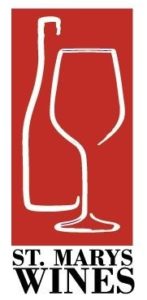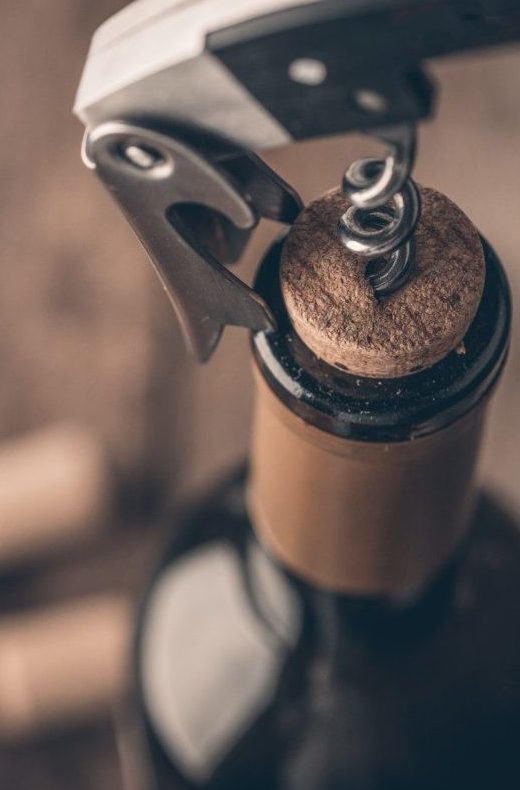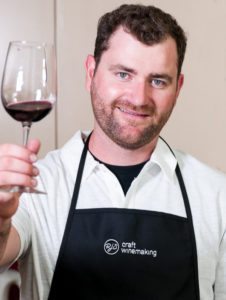Craft & Cork >> Winemaking

RJS Academy Feature: St. Marys Wines
What is it that you look for when visiting one of our loyal RJS Craft Winemaking Academy Stores? Is it the friendly service, the knowledgeable owners, the large selection of wine styles, or maybe even just a clean and comfortable environment? While everyone might have a different answer to this question, none will deny that RJS Academy Stores are at the forefront of our industry because of their innovation and pursuit of excellence.
 St Marys Wines is owned and operated by Randy Partridge, in the beautiful town of St Marys, Ontario. Randy, one of our most passionate and innovative Academy store-owners, draws dedicated customers in from as far as 150km away. Randy has been making wine now for 40 years, all starting at 17 years old when his older brother gave him a wine kit. Since that first kit, Randy has developed many tricks and techniques that have allowed him to take RJS Craft Winemaking kits to the next level.
St Marys Wines is owned and operated by Randy Partridge, in the beautiful town of St Marys, Ontario. Randy, one of our most passionate and innovative Academy store-owners, draws dedicated customers in from as far as 150km away. Randy has been making wine now for 40 years, all starting at 17 years old when his older brother gave him a wine kit. Since that first kit, Randy has developed many tricks and techniques that have allowed him to take RJS Craft Winemaking kits to the next level.
We all know that quality wine kits always begin with quality juice, and RJS maintains a very high standard year after year. Water quality, which is the responsibility of each individual winemaker, is probably the second most important aspect of producing outstanding wines from kits since it plays a crucial role in healthy fermentations and wine clarification. Water filtration is very important to Randy so he uses a double carbon filter, followed by a UV light.
 A hotly debated topic among many RJS Academy owners is which degassing technique to use. I have noticed most craft winemaking retailers using the drill mounted fizz-x tool for removing carbon-dioxide from the wine. This technique is efficient for removing carbon-dioxide, but it also introduces unwanted oxygen into the wine and can potentially blow off beneficial volatile aromatics from the wine. Randy uses a vacuum pump for degassing his wines which allows him to degas a carboy in about 5 minutes. Once he has the negative pressure set at around 20PSI, he can walk away and complete another task in his store while the carboy is degassing. For larger retailers, this degassing method can be an excellent way of maximizing store labor-efficiency. The vacuum method of degassing is very gentle on the wine, can be installed for as little as $300, does not introduce any unwanted oxygen, and results in wines that are softer and smoother on the palate.
A hotly debated topic among many RJS Academy owners is which degassing technique to use. I have noticed most craft winemaking retailers using the drill mounted fizz-x tool for removing carbon-dioxide from the wine. This technique is efficient for removing carbon-dioxide, but it also introduces unwanted oxygen into the wine and can potentially blow off beneficial volatile aromatics from the wine. Randy uses a vacuum pump for degassing his wines which allows him to degas a carboy in about 5 minutes. Once he has the negative pressure set at around 20PSI, he can walk away and complete another task in his store while the carboy is degassing. For larger retailers, this degassing method can be an excellent way of maximizing store labor-efficiency. The vacuum method of degassing is very gentle on the wine, can be installed for as little as $300, does not introduce any unwanted oxygen, and results in wines that are softer and smoother on the palate.
Randy’s true pride and joy (other than his family) would have to be his sparkling wine and beer programs. He has been experimenting with different sparkling wine styles and methods, and as a result has won many awards at the annual Wine Maker International Amateur Wine Competition. You name a wine, Randy has made it as a sparkling! He uses a counter pressure bottling unit which allows him to efficiently bottle the sparkling wine while reducing foam overs in bottle.
What I respect most about Randy is his willingness to help other retailers improve their winemaking processes, and help new retailers get off on the right foot. It is passionate retailers like Randy Partridge at St Marys Wines and their dedication to their craft who will help to bring the craft winemaking industry to the next level!
 Chris Holman has been making wine professionally since 2006, which has led him to work in regions such as the Niagara Peninsula, Okanagan Valley, McLaren Vale South Australia, and Tasmania. Chris earned a 2 year diploma at Niagara College in Winemaking and Viticulture in 2008 and more recently he received a 4 year B.Sc degree majoring in Oenology and Viticulture at Brock University in 2015. His academic achievements in addition to his technical winemaking experience will allow him to provide our customers with excellent technical support and new ideas, helping them continue to make excellent wines.
Chris Holman has been making wine professionally since 2006, which has led him to work in regions such as the Niagara Peninsula, Okanagan Valley, McLaren Vale South Australia, and Tasmania. Chris earned a 2 year diploma at Niagara College in Winemaking and Viticulture in 2008 and more recently he received a 4 year B.Sc degree majoring in Oenology and Viticulture at Brock University in 2015. His academic achievements in addition to his technical winemaking experience will allow him to provide our customers with excellent technical support and new ideas, helping them continue to make excellent wines.


I have been using the fizz-x for degassing for several years now in my shop (The Winemakers Boutique) and find it very effective for degassing. However, I also notice that some of my wines take a little longer to bottle age to achieve a smooth finish that my custoners like. I would like to learn more about the vacuum system that St. Mary’s use to degass. Where can I get more details?
Please advise.
In this article you state “Once he has the negative pressure set around 20 PSI, he can…..”. Also, in your article “Degassing: Removing those pesky bubbles” you mention a negative pressure of around -18 PSI. Both of these pressures are less than atmospheric pressure at sea level (14.7 PSI absolute). The lowest pressure possible is a total vacuum at 0 PSI absolute. Are your numbers in error or am I misunderstanding something?
Also, do you have any guidelines for the amount of vacuum the various types of glass carboy can withstand before failure? Bear in mind that a sealed steel drum (at sea level pressure of 14.7 PSI that is being subjected to an ncreasing interior vacuum) will typically crumple before the pressure difference reaches 10 PSI.
Sorry, I only want to use my initials instead of my name.
Thank you for your inquiry.
The proper unit of measurement would be (in.Hg) which is relative to vacuum. PSI is a more familiar unit of measurement which is why we used it here. If the glass carboy is filled up into the shoulders it will withstand a negative pressure of 30 in.Hg. If you increase the pressure any more than this you will be pulling the wine out the top of the carboy and into the degassing unit. ALWAYS ensure that the carboy is topped up into the shoulders or you will run the risk of imploding the carboy. If you have any other questions, please contact us at 1 800 663 0954 or rjsinfo@cbrands.com